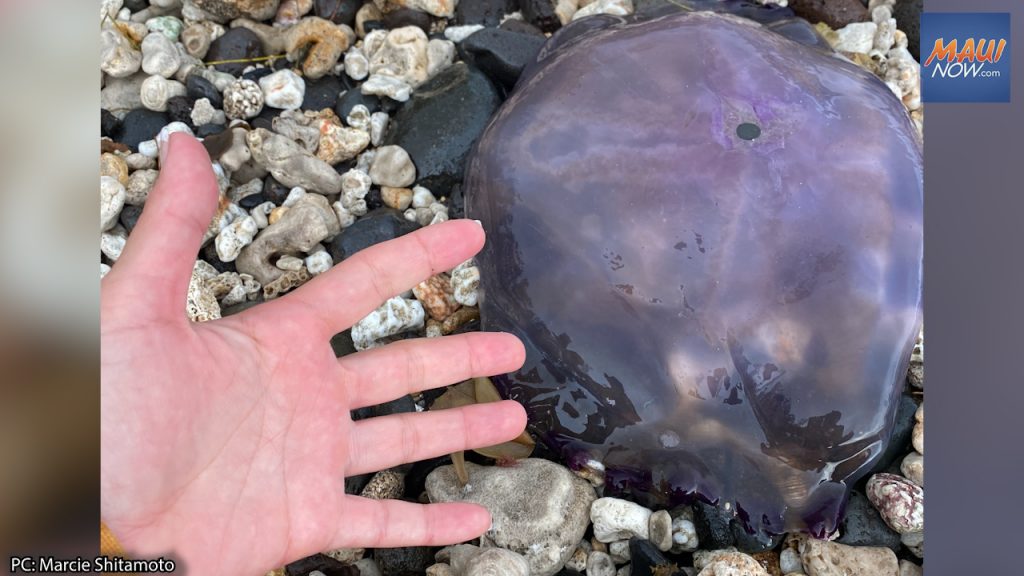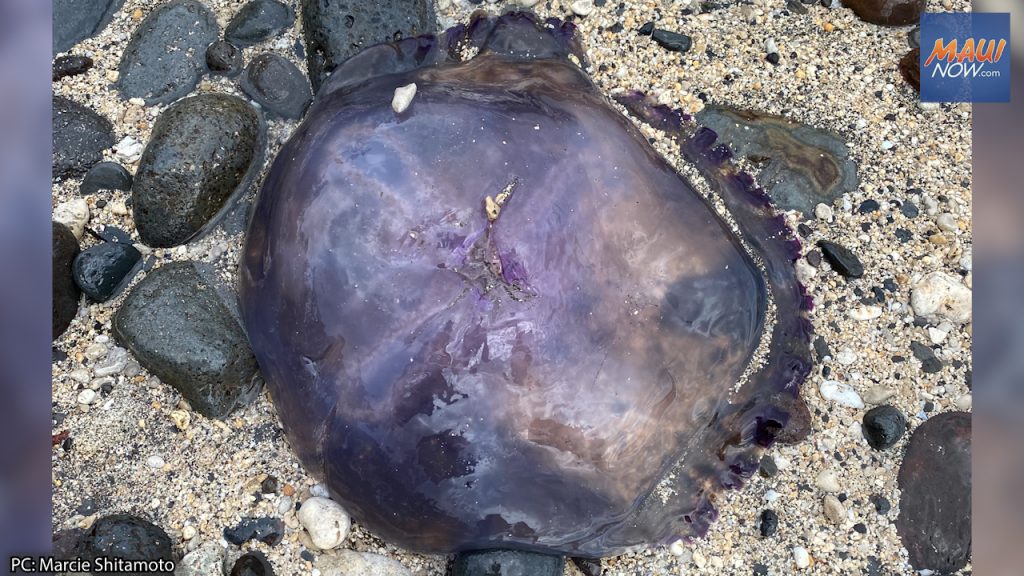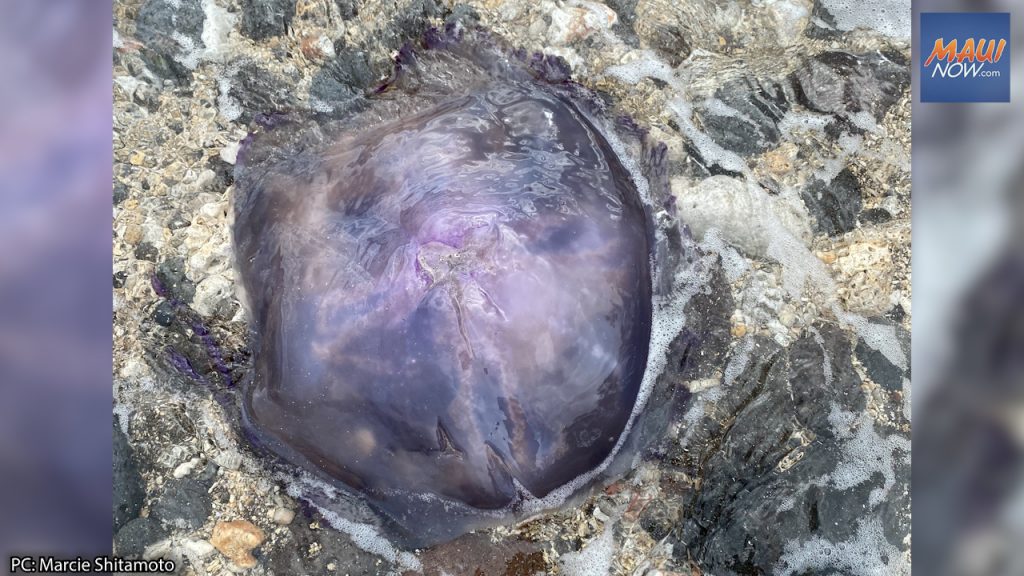Moon jelly found off Maui is big, but common and non-threatening
A large purple moon jelly washed ashore at Waiehu Beach on Maui’s north shore today, but while impressive in size to unsuspecting beachgoers, experts say they are relatively common in Hawaiʻi.
“Moon jelly’s can reach about 2 feet in diameter,” said Tommy Cutt, Executive Director of the Maui Ocean Center Marine Institute in an email to Maui Now.
“They have a mild sting but most people do not have a reaction to it. Marine animals, like sea turtles, that feed on moon jelly’s often mistake plastic for them,” said Cutt, noting that they are typically found in warm, nearshore waters.
According to the Monterey Bay Aquarium website, the moon jelly can grow up to 24 inches in diameter, is shaped like a translucent moonlike bell, and is found in coastal habitats. “Instead of long trailing tentacles, the moon jelly has short tentacles that sweep food toward the mucous layer on the edge of the bell,” according to the site.
The one pictured above was spotted by Maui resident, Marcie Shitamoto, who said it was her first time to see one. The sea jelly had washed up at Waiehu Beach along Maui’s north shore, and images show that the creature was larger than an outstretched hand.
According to information posted on a Maui Ocean Center blog, “There are over 200 species of sea jellies found throughout the world but only 15 are known to inhabit Hawaiian waters.”
Box jelly invasions are known to occur about 8-10 days after a full moon. The University of Hawaiʻi Waikīkī Aquarium notes that “the largest of the locally-occurring species, C. alata is identified in the recurring ‘invasions’ that have been reported on Oʻahu shores since late l988.”
These box jellies are a much smaller species, growing to 3 inches in height. According to the aquarium website, “sensitivity varies from individual to individual; some may be highly allergic to jellyfish or man-o’-war stings or even to the treatment listed here and need physician’s care.”
“Despite the word ‘fish’ in their names,” the National Oceanic and Atmospheric Association notes that, “jellyfish are not actually fish. No bones about it, they are invertebrates.”



















